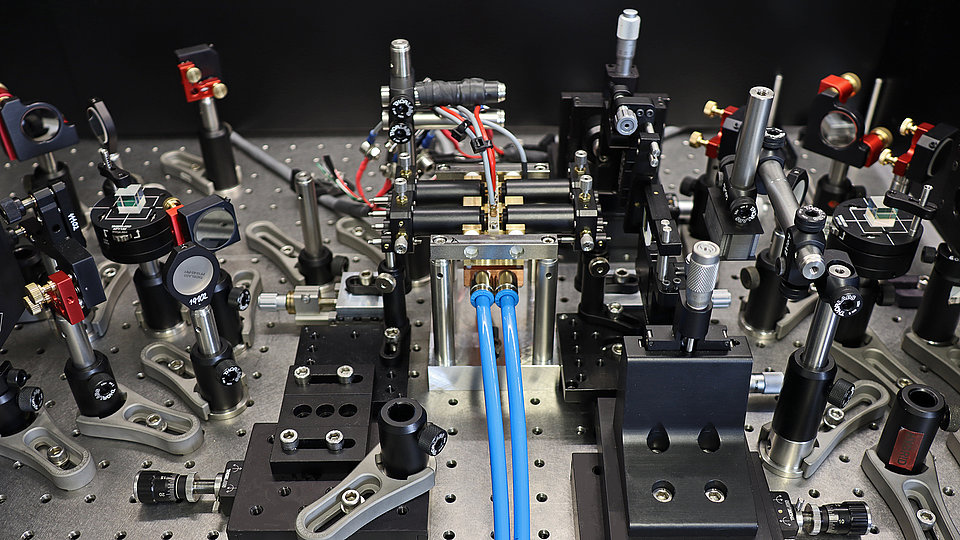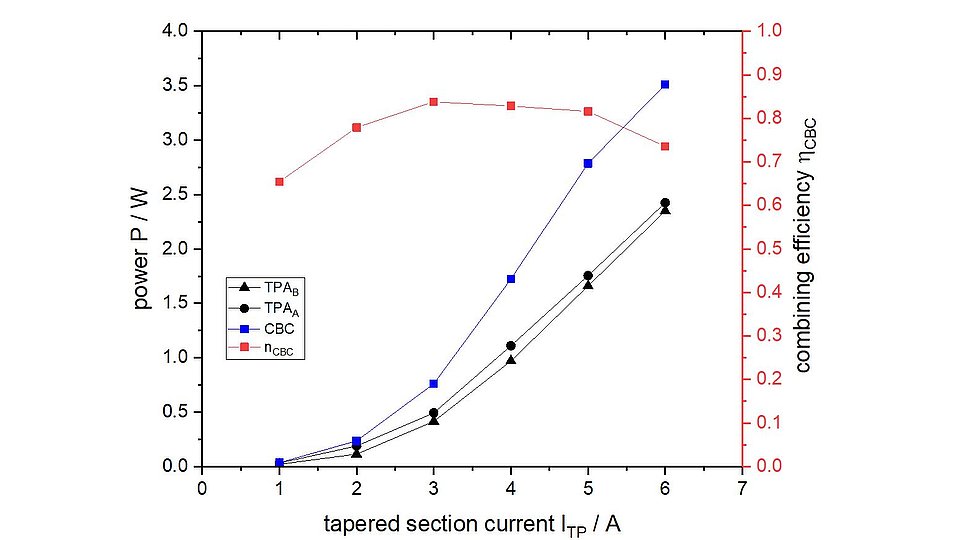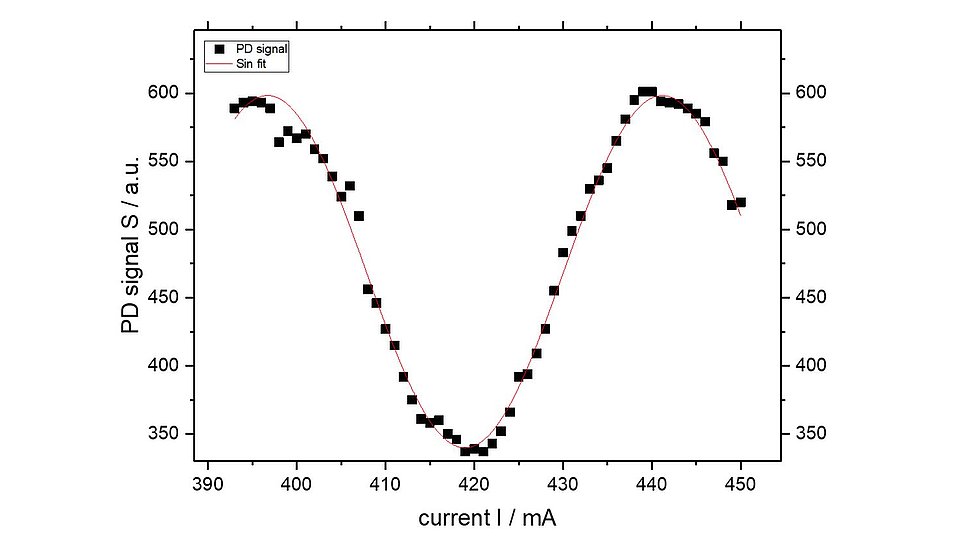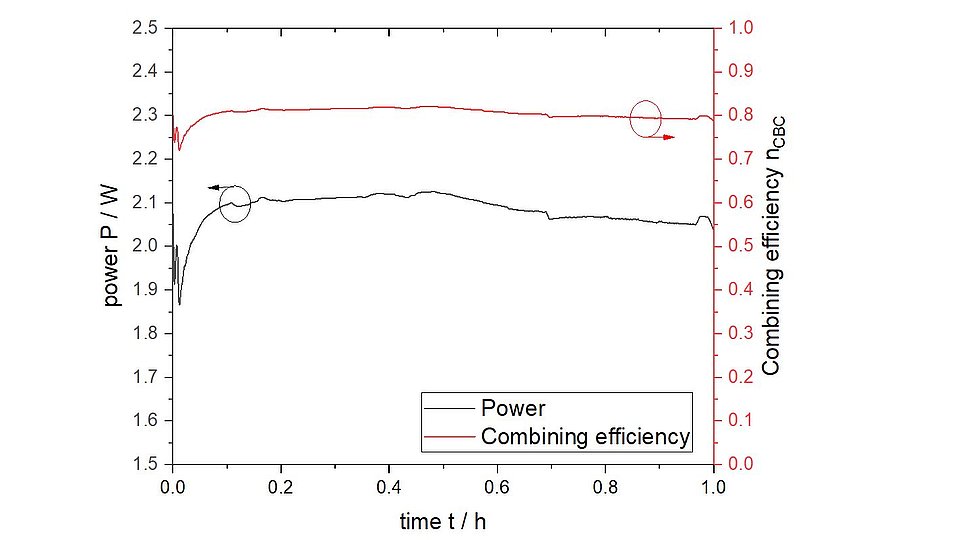Significant progress in coherent beam combining with diode lasers and tapered amplifiers at 808 nm
Fig. 1. Coherent beam combining (CBC) setup of two individual tapered optical amplifiers (TPAs) at 808 nm.
Fig. 2. Optical power and combining efficiency vs ITP characterization of the CBC setup, MOPA-A and MOPA-B, IRW = 300 mA, IMO = 60 mW.
Fig. 3. CBC phase control by tuning the RW current and sinusoidal fit with period T = 40 mA (2π phase shift). Measurement conditions: PMO = 60 mW, ITP = 5 A.
Diode lasers with high optical power and good beam quality are in high demand for many technological applications, including laser cutting and destruction of diseased cells. Their electro-optical efficiency, robustness and very small dimensions make them perfect candidates for applications with limited space. However, single-mode diode lasers have power limitations of a few hundred milliwatts due to the risk of catastrophic optical mirror damage (COMD). The first step in overcoming this limitation is to use a tapered optical amplifier (TPA) and create a master oscillator power amplifier (MOPA). This allows the power to be increased to a few watts.
Coherent beam combining (CBC) is a very useful method that can overcome even this power limitation. In this method, two or more amplified laser beams can be coherently combined to produce a single beam with much higher optical power. FBH has now successfully demonstrated a setup by coherently combining the radiations from two individual TPAs at 808 nm into one single beam. The current through the ridge waveguide (RW) section of the tapered amplifier is used for phase stabilization [1]. The phase locking process was automated by using a microcontroller and a reserved climbing hill algorithm.
With this setup, we achieved a remarkably high combination efficiency of over 80 % and a maximum combined optical power of PCBC = 3.5 W. This is a significant increase in optical power compared to a common MOPA, which usually achieves a power of 2.4 W (Fig. 2).
Phase control was performed by tuning the current through the ridge waveguide section (IRW) of the one TPA to stabilize the relative phase difference between the amplified beams. At a current of 20 mA, the average phase shift was π, so the relationship between the phase and RW current is 20 mA / π (Fig. 3).
We investigated the stability of the CBC operation over time. First, we measured the combined power and then the combination efficiency on the constructive interference path of the CBC interferometer over one hour. In this case, we had a very stable system with an RMS stability of 1.3 % (Fig. 4).
This project was supported by the Université Paris-Saclay, Institut d'Optique Graduate School, CNRS, Laboratoire Charles Fabry.
Publication
[1] C. Mourikis, G. Blume, A. Maaßdorf, J. Fricke, K. Paschke, G. Lucas-Leclin, G. Tränkle: “Coherent beam combining progress on diode lasers and tapered amplifiers at 808 nm”, submitted and accepted for Photonics West 2022, soon on the proceedings.



